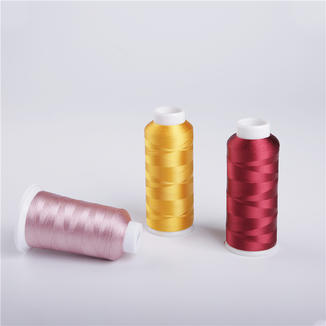Polyester Yarn is one of the most widely used synthetic fibers in the textile industry, favored for its durability, elasticity, and resistance to shrinkage. However, achieving high color fastness during the dyeing process can be challenging due to its hydrophobic and crystalline molecular structure.
Why Color Fastness Matters in Polyester Yarn Dyeing
Color fastness determines how well a dyed material can retain its color without fading or bleeding. For Polyester Yarn, high fastness is essential in applications such as sportswear, upholstery, industrial fabrics, and fashion textiles.
- Improves product quality and durability
- Enhances consumer satisfaction
- Reduces complaints and returns
- Increases competitiveness in global markets
Key Factors That Influence Color Fastness
1. Dye Selection
For polyester materials, disperse dyes are the most effective because they penetrate the fiber structure through heat and pressure. Higher-grade disperse dyes show significantly better wash, light, and rubbing fastness.
2. Dyeing Temperature and Time
Polyester requires high-temperature dyeing (typically 120–135°C) to open its fiber pores. Insufficient heat or time results in poor dye penetration, leading to easy fading. Optimal dyeing cycles improve color depth and stability.
3. Carrier Use (For Low-Temperature Dyeing)
When high-temperature equipment is unavailable, dyeing carriers can help improve dye absorption. However, they may affect fabric hand feel and environmental safety, making them less ideal than HT dyeing.
4. pH Control in Dye Bath
Maintaining the dye bath at pH 4.5–5.5 ensures proper dye dispersion and stability. Incorrect pH can cause uneven coloring and reduced fastness.
5. Post-Treatment Processes
Post-dye treatments such as:
- Reducing clearing
- Soaping
- Fixing agents
help remove unfixed dyes and improve washing fastness significantly.
Comparison of Dyeing Methods for Polyester Yarn
| Dyeing Method | Advantages | Disadvantages |
|---|---|---|
| High-Temperature High-Pressure Dyeing (HTHP) | Best color fastness; deep shades; consistent results | Requires advanced equipment; higher energy consumption |
| Carrier Dyeing | Suitable for low-temp machinery | Strong odor, environmental concerns, lower fastness than HTHP |
| Dope Dyeing (Solution Dyeing) | Excellent fastness; no wastewater; vibrant long-lasting color | Not flexible for small batches; higher initial cost |
Practical Tips to Improve Color Fastness When Dyeing Polyester Yarn
- Use high-quality disperse dyes with good sublimation resistance
- Optimize dyeing curve: slow heating and controlled cooling
- Ensure proper yarn pre-treatment to remove oil and impurities
- Use dispersing agents to prevent dye agglomeration
- Apply reducing clearing to remove surface dyes
- Consider dope-dyed Polyester Yarn for maximum fastness
Frequently Asked Questions (FAQ)
1. Why is polyester difficult to dye?
Its hydrophobic and highly crystalline structure prevents water-based dyes from entering the fiber. Only disperse dyes combined with heat/pressure can achieve proper penetration.
2. Which dyeing method gives the best color fastness?
High-Temperature High-Pressure dyeing offers excellent results for most textile producers. Dope dyeing delivers the highest possible fastness but is less flexible for custom colors.
3. How can I reduce fading after dyeing?
Ensure proper reducing clearing and choose dyes with high lightfastness. Avoid overly aggressive softeners that may wash out surface dyes.
4. Does yarn pre-treatment affect color fastness?
Yes. Removing spinning oils, dirt, and waxes helps dyes adhere better and ensures uniform penetration.
Conclusion
Improving color fastness in Polyester Yarn dyeing requires a combination of the right dyes, optimized dyeing conditions, and effective post-treatment. By refining each step, manufacturers can achieve vibrant, durable colors that meet modern textile performance standards.

 英语
英语 中文简体
中文简体











 100% Polyester Series
100% Polyester Series






